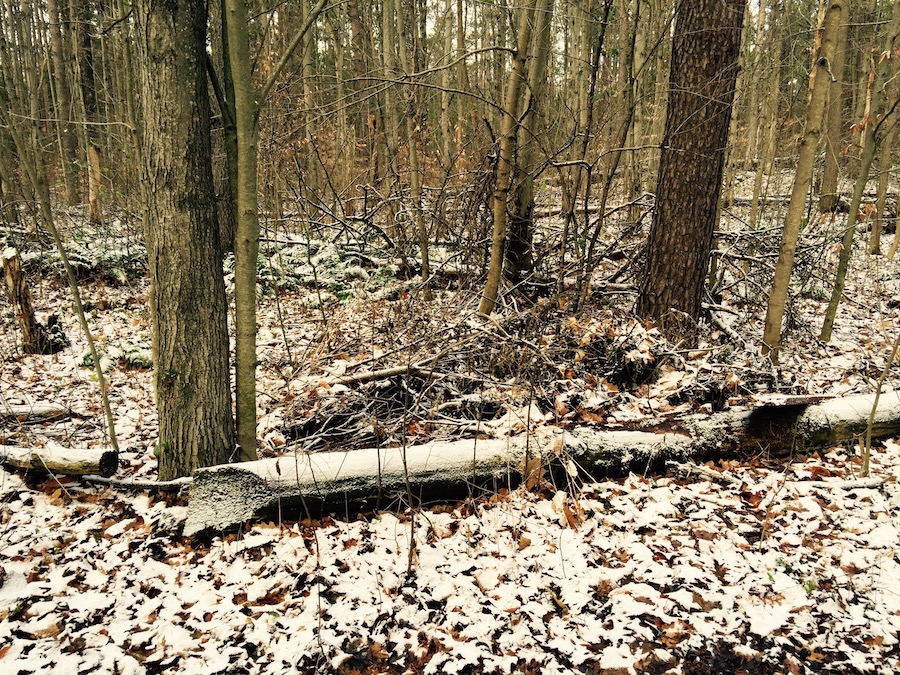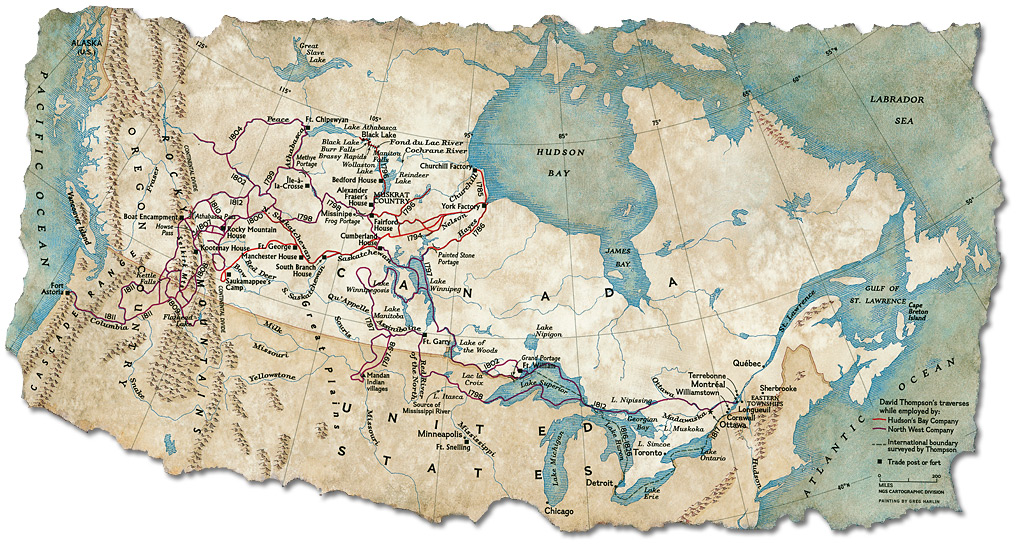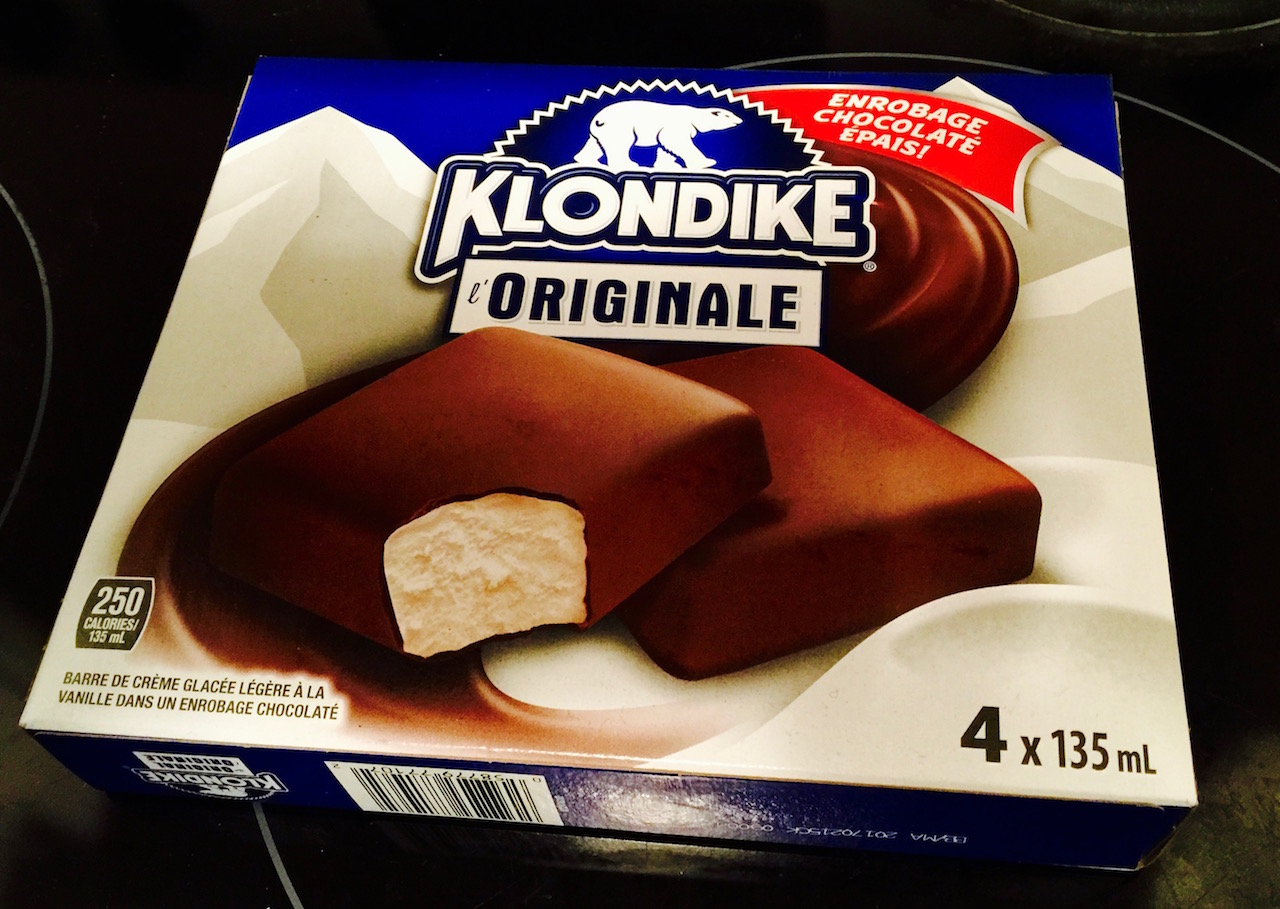On a cloudy and cold November-14, I set out to hike a distance of about 25 km at the Durham Regional Forest , Walker Woods and Glen Major areas. I undermined the weather at a cost because in the adjoining forest area it had snowed the previous night, with a high temperature of only around 2ºC. I went easy on the warm clothes because the hike makes you sweaty after all. Also this was a fast hike where a consistent speed of about 5.5 km/h had to be maintained all throughout.
This hike was expected on a hilly terrain but not biking trails which meander endlessly up and down slopes. It makes a long hike challenging with the prevailing weather system. The fallen leaves hide tree roots invisible to naked eyes, and at a faster pace on the slippery leaves, one can could trip and fall. As I tumbled today while attempting a fast descent on a slippery, rocky slope that wasn’t even part of the biking trail. I landed on my back and my right thumb got smashed badly in the sudden fall. I was so stunned by the plunge over the slope that I wasn’t even aware what had happened until about a few minutes later. I think I should be doing okay in a few days.
At 12:30 PM, around the halfway distance mark we all settled on the dry grass near an old barn for a 10-minute short lunch break. We were looking to shelter ourselves from the cold winds but brief stops such as these make you colder in no time, while the Sun showed up only momentarily to brighten things up. Surprisingly while we were all focussed on our munching, a golden retriever came out of nowhere from the field, dashed towards us and started sniffing around the group. He obviously got a whiff of the meals and decided to have a share of it. We were only too glad to do the honours and he disappeared in the shrubs wagging his tail merrily. But reappeared minutes later with three of his doggie friends! He may have shared the news of some Good Samaritans beside the old barn offering free food. Unfortunately we had finished our lunch and were ready to hit the trail by then. It isn’t uncommon for owners to let their friendly dogs off-leash in these parts of wilderness. We continued meandering through the Walker Woods and Glen Major forest and the endless biking trails again. The serpentine trails would often break into forks at several places and Arnie, our group leader would look at the skies to decide on the direction to take. Thankfully at every few kilometres of the nature trail the park authorities have set up wooden masts with a unique number and a small map of the trail around which corresponds to our location and onwards – the map shows the unique pole numbers and the direction so the travellers could decide where they would like to go. The ever so indulgent group would collectively surround the measly shaft for a lengthy discussion on the next steps. The Sun outnumbered by the clouds wasn’t helping us much but the maps on the numbered posts provided stronger clues on the trail towards the parking lot where our hike was culminating. We were told to look for a pair of communication towers on the northern end of the trail from where the parking lot would be about 2.5 kms. When we saw the towers it raised my hopes and infused a new vigour to continue marching on with an even greater force towards the goal. Between washroom breaks and the odd humour, the group managed to keep up the pace and stayed together until the end of the hike. The sun never showed up afterwards and the cold wasn’t something to write home about.
Personally, my thumb episode took the focus and fun away from the hike. I couldn’t indulge completely on the trail then or the landscape which was the saddest part of the journey. The elevation wasn’t much although there were some hills but mostly biking trails. And the faster pace on the slippery leaves along the ever-changing terrain ensured limitless challenge for me. Despite everything this hike would stay a memorable one for me for different reasons.
Featured Photo Courtesy: © 2015 Bhooshan Pandya. Should Not Be Reproduced Without Permission.



